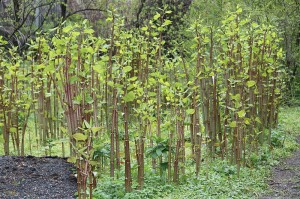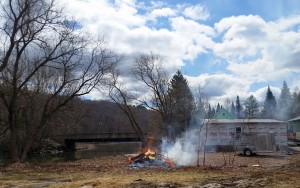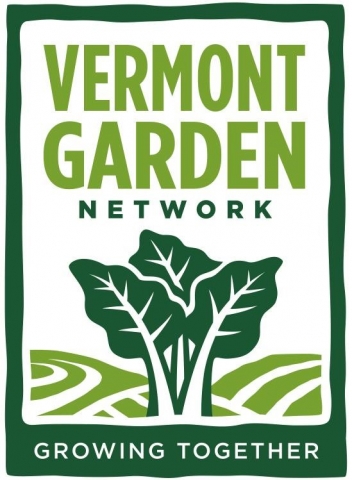
Japanese knotweed (Fallopia japonica) in The University of Helsinki Botanic Garden in Kaisaniemi (by Anneli Salo). Great Britain imported Japanese knotweed as an ornamental plant starting in the mid-1800s. By the time its destructive properties were discovered, it had spread too prolifically to eradicate. Now the World Conservation Union calls it one of the world’s worst invasive species.
Last week was the beginning of the end for the Japanese knotweed infestation at The Garden at 485 Elm.
The knotweed is growing in a quarter-acre patch in the southeast corner of the property along the North Branch of the Winooski river.
People came and mowed down our patch’s early spring growth, raked up the pieces, and burned them. The knotweed patch will be cut every month during the growing season. In 3-5 years (or possibly longer), this will weaken the plants enough to kill them and stop their spread. Then we will replant with native species.
Japanese knotweed is lovely to look at. Its spring shoots are tasty à la rhubarb. It has medicinal properties. Bees feed on it.
But Japanese knotweed grows up to 23 feet high. It crowds out native plants, destroys native animal habitat and food sources, and damages human structures.
Knotweed grows beside rivers because plants falling into the river, floating downstream, and landing up in a new area is a major cause of their spread. We want to stop this property’s potential for further knotweed spread.
A Mirror UK article explains the challenges of fallopia japonica:
And at its most prolific it can grow up to 20cm EVERY DAY.
It can even grow through concrete and tarmac and its roots can go down up to 3m deep.
There are no natural predators either meaning the weed can grow unabated, swamping other plants and preventing them from getting any light.
And while it does not produce seeds it can grow from minuscule fragments of rhizomes – the underground network of stems and roots – meaning it spreads easily.
A Wikipedia article about Japanese knotweed offered this delightful possibility: “Anecdotal reports of effective control describe the use of goats to eat the plant parts above ground followed by the use of pigs to root out and eat the underground parts of the plant.”






